My Mindful Lockdown Hobby: Sea Glass (& How to Find it)

TWENTY-TWENTY was a good year for hobbies. The huge amount of time we spent locked down at home meant I found solace in revisiting long forgotten hobbies (like my cross stitch) and when we were permitted outdoors again, I discovered a love for something new:
The addictive world of sea glass!
As last year’s spring lockdown eased, I noticed some photos on Facebook shared by my church pastor who’d gone looking for sea glass. I was so intrigued; the idea of finding washed up beach treasure appealed massively to me and I was soon itching to get hunting myself.
As our family love exploring places I thought it could be pretty good fun for us to do together. And after the long months spent at home, being able to go a little further afield for some fresh sea air and wide open space was much needed.
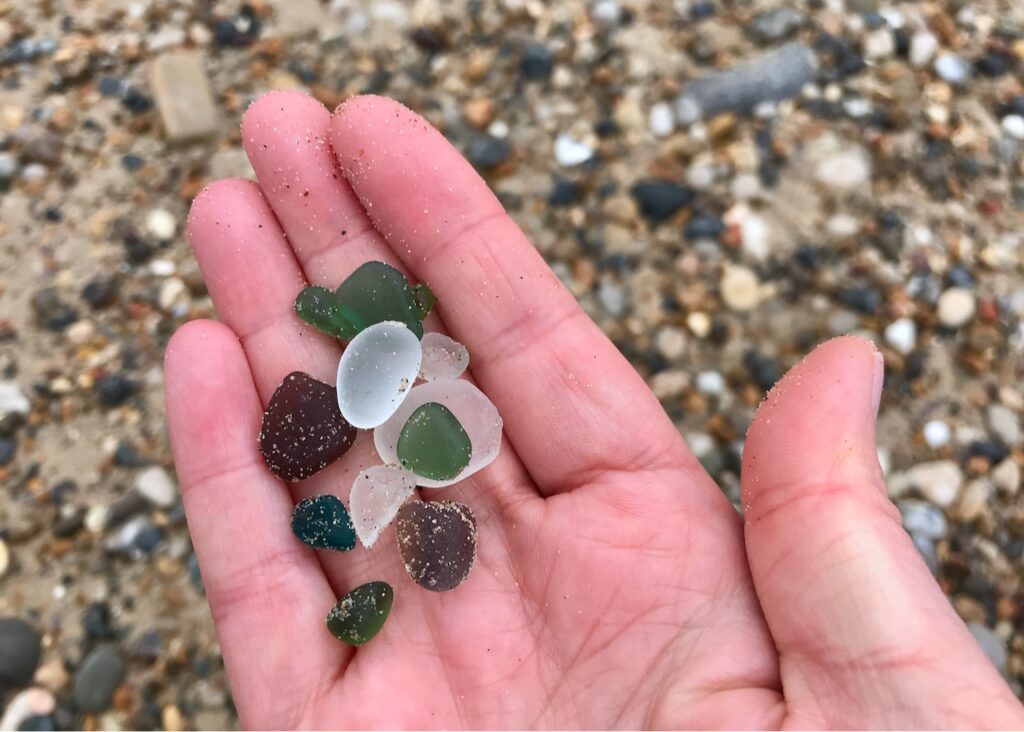
Now, this time last year I couldn’t have told you anything about sea glass other than it’s something you pick up off the beach. So, keen to discover more about these beach gems, I ended up spending a fair bit of time researching, learning more about the range and rarity of the colours you can find and importantly, where best to find it. In the north east of England, Seaham is famed for its stretches of sea glass bearing beaches, so that’s where we headed.
What is Sea Glass?
Sea glass is naturally tumbled glass that’s spent many years ravaged at sea, until it’s washed up on the shore. It’s essentially the byproduct of long gone glass factories who used to dump their waste glass into the sea, so what started out as ugly broken glass ends its cycle as beautiful coloured pebbles.

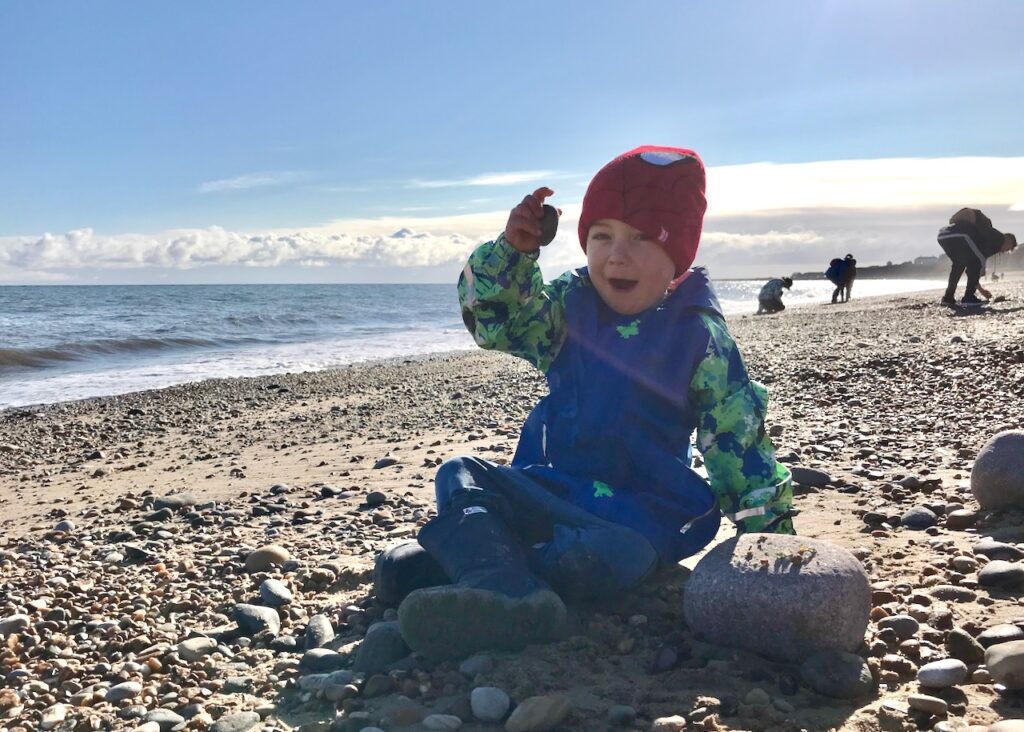
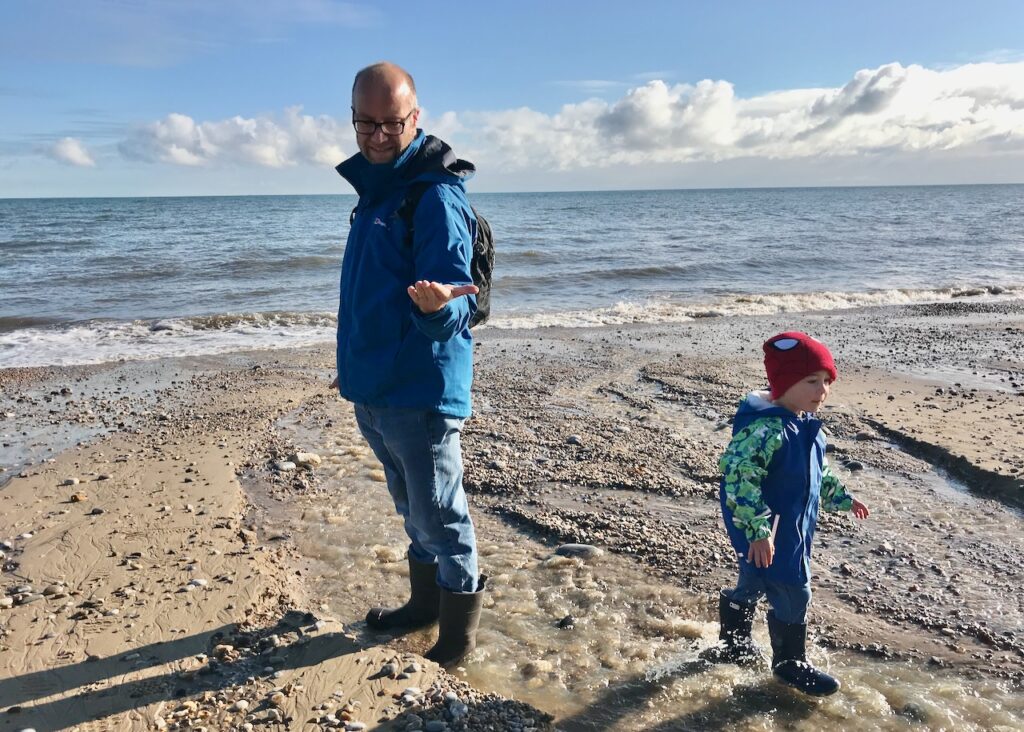
What to Look For
Sea glass comes in many colours from orange to green to blue. Any colour a glass product has been produced in – we’re talking ornamental vases, medicine bottles, perfume bottles and alcohol, the list is endless – there’s a chance of finding it. The commonest glass is clear, followed by dark greens and brown too, since these are the most popular colours of glass, typically used for everyday products like window panes and beer bottles.
All colours are exciting to find and collect, however you’ll find (as I did) that soon you come to desire the rarer shades and the ‘multis’, and you may be more particular about their shape too.
While dark, classic ‘bottle green’ is common, some shades of green aren’t. Bright emerald-like pebbles seem to be the hardest to come by and absolutely beautiful. And interestingly, it’s also possible to find UV sea glass too.
What You Need
Wellies! Absolutely wellies, and the longer the length the better, because the waves easily creep up on you. So to add to this, I’d say you need to dress for the elements – waterproofs with a hood, gloves, and thermal socks in those wellies, so that being cold or wet doesn’t distract you or spoil the day.
There’s also some basic tools that will help you find glass. While spotting sea glass can be pretty easy in the surf, you’ll benefit from a hand shovel or spade to turn sand and stones over in the more shingled areas. We just took Reuben’s play garden tools for digging up stones, and for collecting our treasure, Reuben’s beach bucket and, funnily, a laundry bag. Around the second or third trip I figured out a small bag that’s used for washing socks and bras makes the perfect bag for sea glass. Not only is it light to carry but it’s ideal for washing the glass later on.
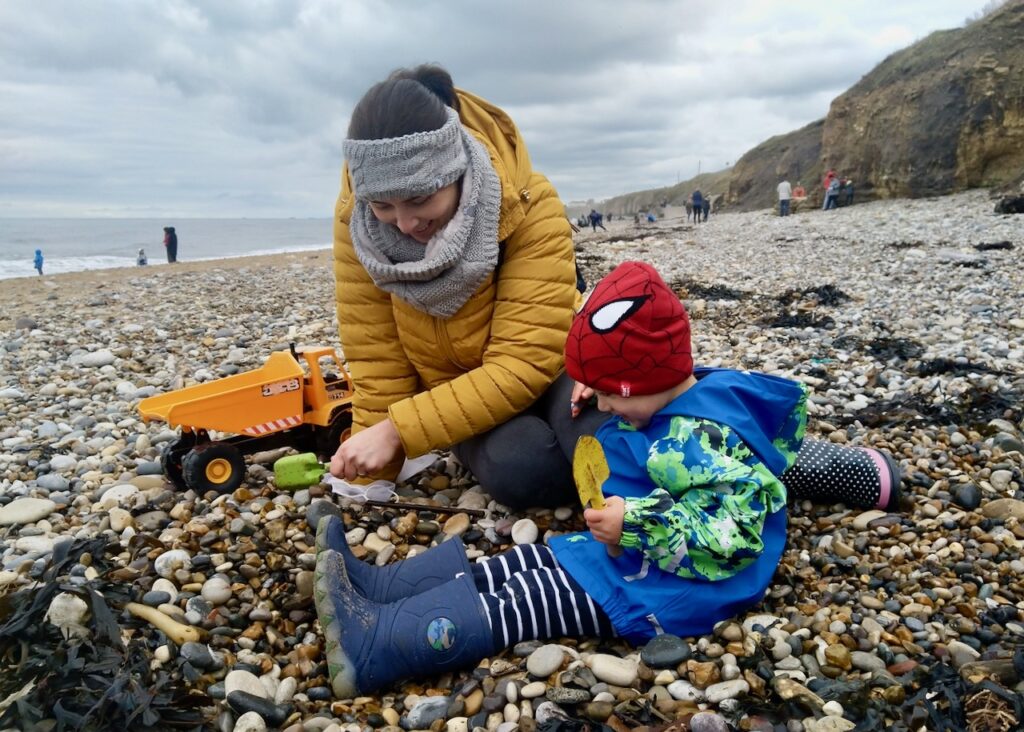
How to Clean Sea Glass
Despite their natural beauty, beaches can be grubby places, so you’ll want to clean and brighten up your glass gems before you do anything with them.
Washing the sea glass is the first thing you’ll want to do, and this is where using a mesh laundry bag or reusable vegetable bag to collect your stash pays off. Fill a bowl or sink with hot water, adding a drop of regular dish washing up liquid. If your sea glass is in a mesh bag, you just need to swish it around in the bubbly water to rid it of any dirt and sand. If you don’t have a bag, you just need to be extra careful not to lose any small pieces of glass down the plug hole.
Sea glass looks very different dry to when it’s wet, so you may have a preference. If you like the soft, frosted look as natural, leave the glass as is. But to make the colour pop and give sea glass a high shine finish, try rubbing a small amount of oil (mineral or vegetable) into the glass using a soft cloth. And voilà, you have super glossy glass!
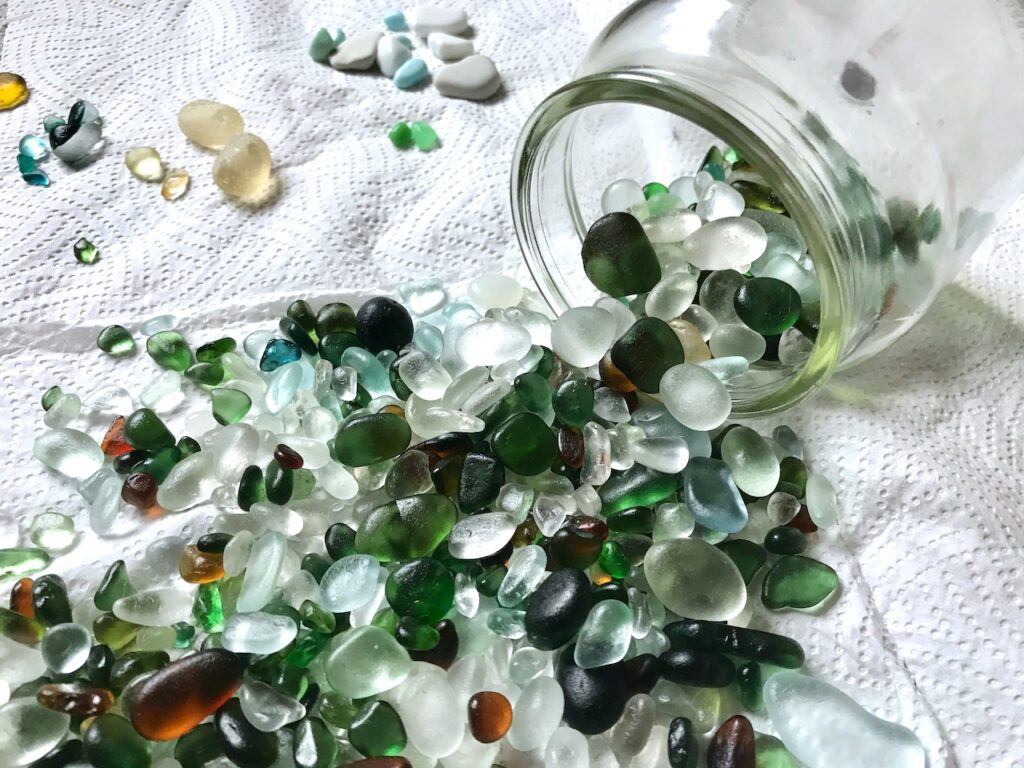
Found any Nice Pieces?
Every sea glass collector looks for something different depending on taste and what you want your sea glass for. As we’ve accumulated a lot of clear and green glass, I like to display it in jars and pretty bottles (they make lovely decorative lamps if you add a little string of bottle lights inside). And for the rarer colours I like to store in compartment boxes and just keep them like a precious jewel, or use in crafts such as jewellery.
While I like all the colours, I do have some favourites. I have some small but eye catching multis, which are sea glass that feature a pattern or different colour element. One has red stripes running through it which is unusual.
In terms of rarer colours, I once found a piece of lavender shade sea glass which I used in creating my first ever handmade necklace, so that’s pretty special.
And I found a lovely deep cobalt blue glass pebble that Reuben says is his favourite so I’m keeping that one. It also reminds me of my dad who liked ornamental blue glass, which isn’t a bad association.
At Christmastime I handmade sea glass necklaces for my mum and sisters, which was a challenge. New to jewellery making, my skills are very much novice level but I still enjoyed creating them, knowing that from the sourcing and selecting of the glass pebbles, to the wire wrapping using my new tools, I made them.

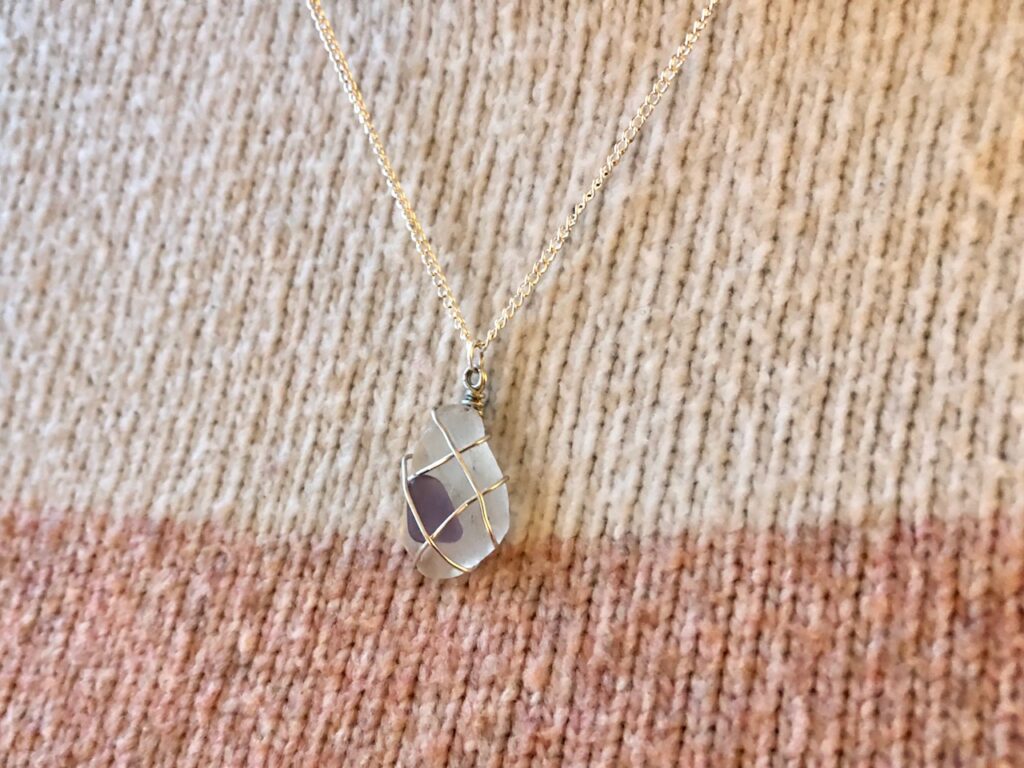

So, is it a good hobby?
Sea glassing is a brilliant interest to have because you can get so much out of it. When you go as a family, it’s lovely to come together as a team, and the fresh air and exercise makes it an exhilarating day out for all.
That’s not to say it isn’t back breaking, because it is. You’re either walking along with your head stooped or bent over picking up, so you need to ensure regular breaks and take it easy. My position of choice is mostly to sit on my backside and dig around me, and alternate with kneeling so I’m not pulling my joints.
Lots of people like to go looking for sea glass but it’s always in good spirits. The only real competition you have is with the tide, so if you time your trip well with the tide times, there’s no need to rush.
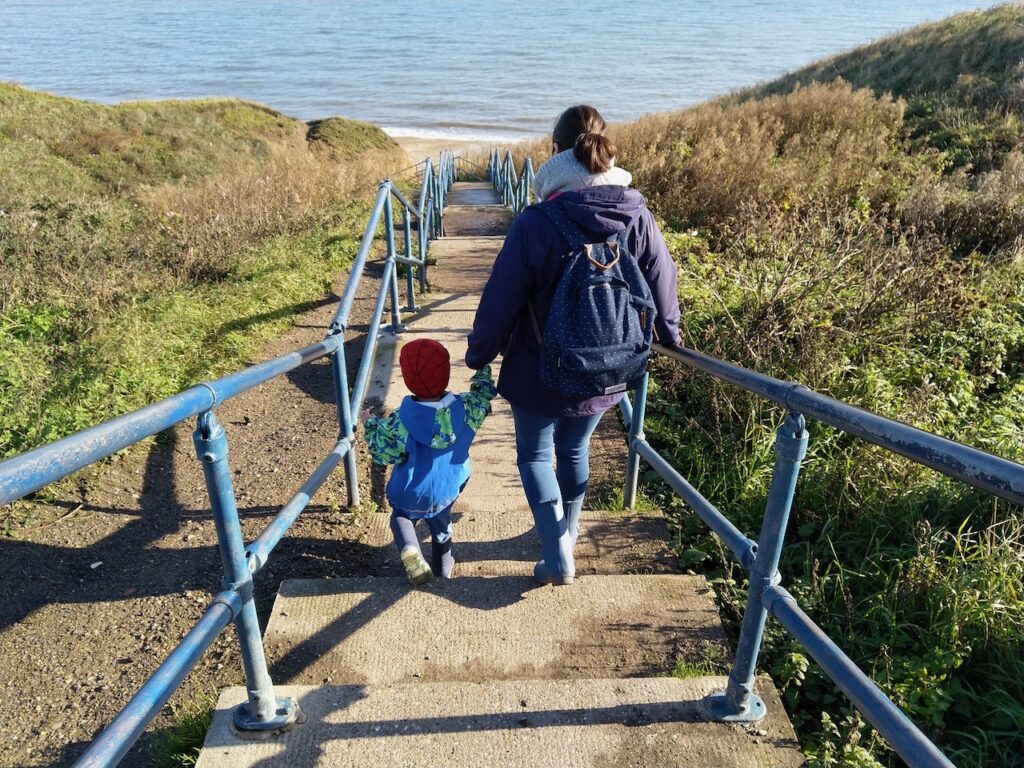
Which brings me to the beauty in looking for sea glass – it’s probably what every doctor should order. Because it’s completely absorbing, restful, refreshing, and takes my mind away from the world for a quietly passed few hours, makes sea glass hunting the ideal mindful hobby we all need right now.
Well, once we’re free from lockdown 3, that is. Until then, at least I have my collection of sea glass to busy myself with.
How did you spend your time during lockdown last year? Did you discover any new hobbies too?


Leave a Reply